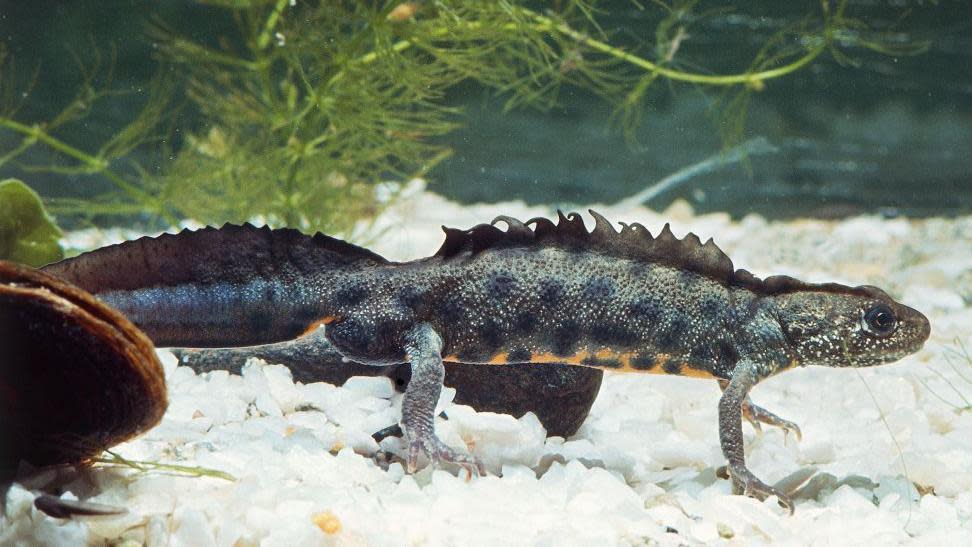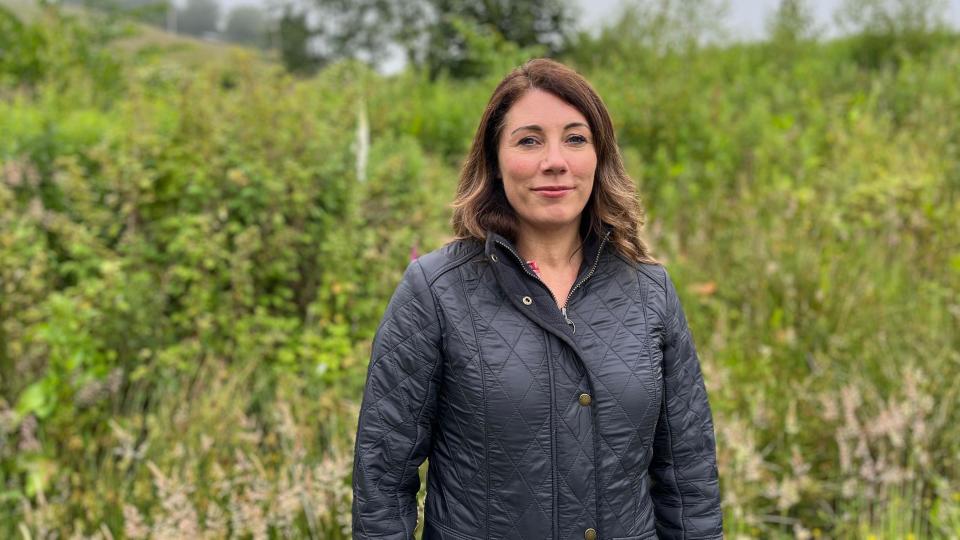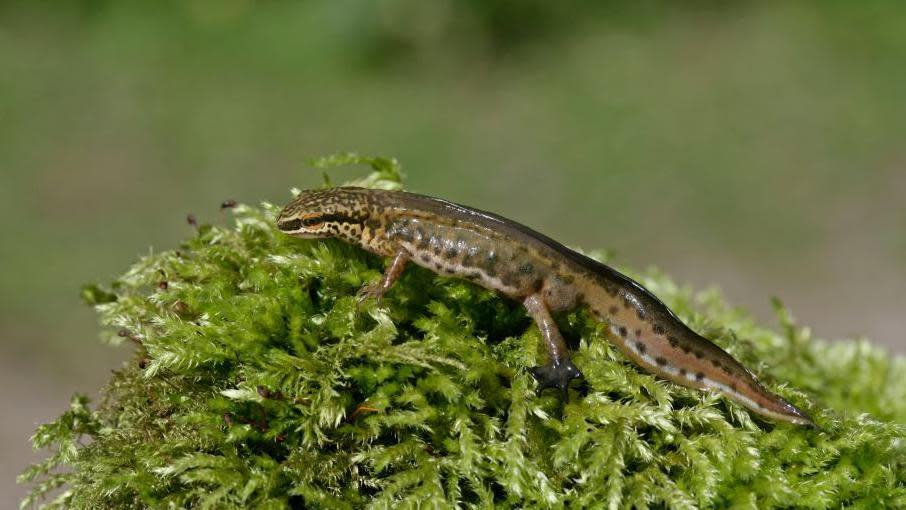Scientists lure endangered newts to ancient wetlands

Nature lovers in the Borders are hoping to protect rare newt numbers by luring them to restored ancient wetlands.
Over the space of a week volunteers will join ecologists and other experts to dig out three former ponds near Selkirk.
Despite the wetlands drying out and becoming overgrown in recent decades, scientists are hopeful that heavily protected great crested newts and other amphibians remain in the area.
Dr Karen Blackport said: "It is absolutely critical that we to do this type of restoration as we are losing so much of our native wildlife."

Habitat loss is regarded as the main reason for the dramatic decline in numbers of great crested newts across Scotland, and the wider UK, from the mid 20th Century onwards.
The iconic amphibians are now heavily protected with it being a criminal offence to harm them, their eggs, or their habitats.
Borders-based charity Bright Green Nature (BGN) carried out studies on sites near Selkirk in 2022, and established former wetlands in and around the Haining estate could be restored to provide perfect amphibian habitats.
An abundance of the plant, glyceria, has also raised expectations that great crested newts are likely to return to the ponds.
Dr Blackport, from BGN, added: "Glyceria is naturally growing everywhere around here, and great crested newts like to lay their eggs on this plant in early summer.
"We identified three old ponds across two neighbouring sites that we are developing to maximise biodiversity for wildlife.
"There is anecdotal evidence that newts used to be seen in this area, so once the ponds are restored it will be a case of continued monitoring to see which species return."

Last winter preparatory work began on the adjoining sites with the building of a hibernacula safe space for amphibians and reptiles.
With permission now in place, digging is about to commence on the three identified former ponds.
Regular DNA testing will take place from water samples over the coming months and years to establish which amphibians have returned to the ponds.
Dr Blackport added: "The sites will become real living laboratories - educational discovery centres - where students and others can come and learn.
"We have lost so much of our native wildlife through habitat loss or the arrival of invasive species, that these types of restoration projects are vital for the long-term survival of the species we still have."
As well as great crested, it is hoped the Selkirk ponds will also entice the country's other two newt species; smooth and palmate.
Monitoring of frogs, toads and wader birds will also take place once the wetlands have become established.
The restoration of the Haining and Deer Park wetlands is the latest project in Scotland, and the wider UK, aimed at boosting numbers of great crested newts.
The Highland Amphibian Reptile Project has successfully translocated 20 newts into existing beaver ponds near Loch Ness.
Following an appeal by the Tweed Forum, a total of 13 small ponds have also been created in other parts of the Scottish Borders as part of its Great Crested Newt Project.
The Selkirk restoration project is being supported by Nature Scot.
Prof Colin Galbraith, who chairs the agency, said: "It's projects like this that can really help to stop biodiversity loss and enable us to move towards a nature-rich future for everyone in Scotland."


